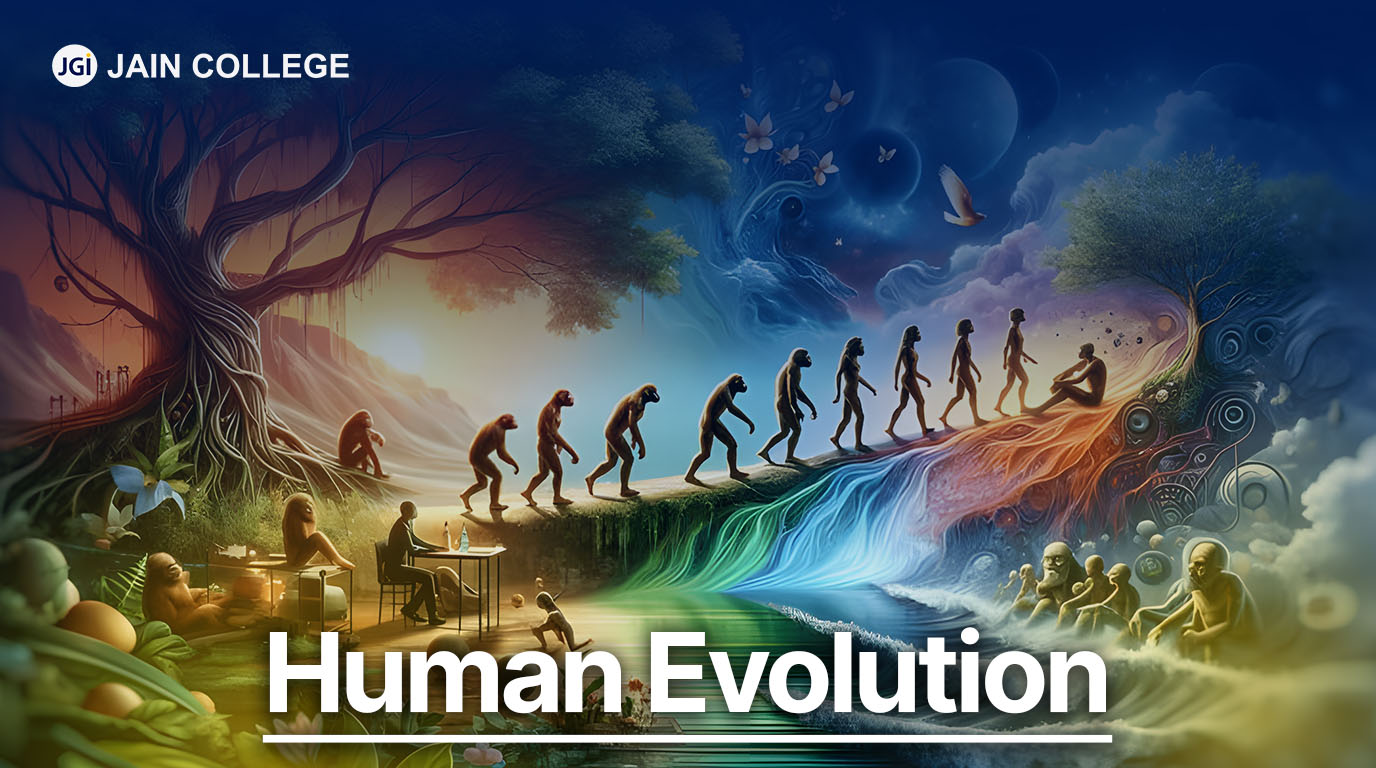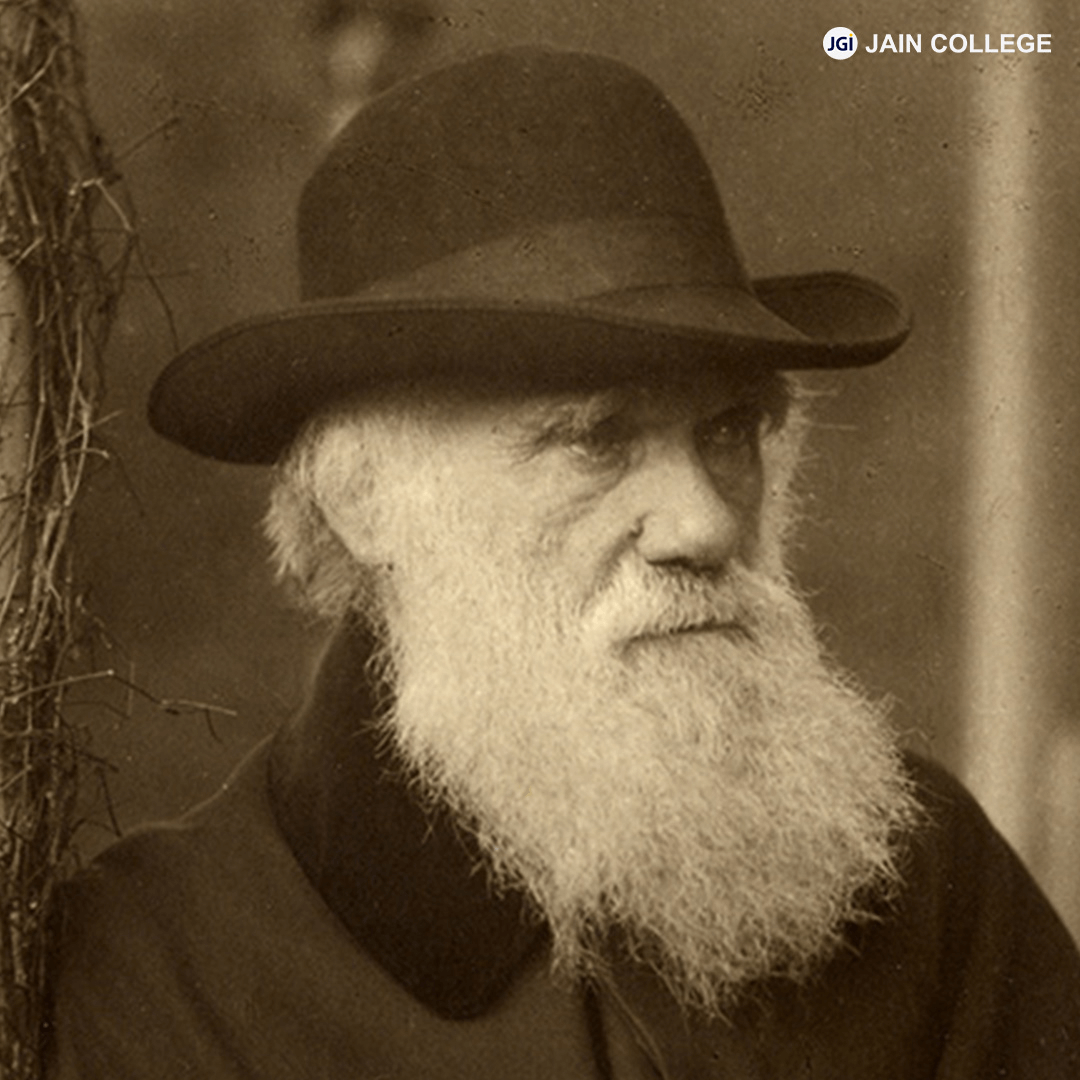
Human evolution is the process by which modern humans (Homo sapiens) evolved from early primates over millions of years. This journey, shaped by natural selection, genetic mutations, and environmental changes, has led to the development of unique human traits such as intelligence, language, and culture.
From the earliest hominins that walked upright to the rise of Homo sapiens, our evolution has been marked by significant milestones, including tool-making, migration, and social development.
By studying fossils, DNA, and archaeological evidence, scientists continue to discover how humans became the dominant species on Earth.
In this article, we will learn more about evolution, human evolution, the process of evolution, how humans evolved, Darwin’s Theory and much more.
Keep Reading!
Table Of Contents:
Evolution is how organisms change over generations due to genetic variations and natural selection. It explains how species adapt, diversify, and sometimes become extinct over time. Charles Darwin famously described the concept in his theory of natural selection, which states that organisms with traits better suited to their environment are more likely to survive and reproduce.
Key Aspects of Evolution:
Evolution is responsible for the diversity of life on Earth, from bacteria to humans. It is a continuous process that shapes the natural world.
Evolution is a gradual process through which species change over time. It is driven by several mechanisms that lead to adaptations and the emergence of new species. Below are the key steps in the process of evolution:
Genetic Variation
Every population has genetic differences due to mutations, gene shuffling, and recombination during reproduction. These variations create different traits within a species.
Natural Selection
Organisms with traits that help them survive and reproduce are more likely to pass those traits to their offspring. Over time, favourable characteristics become more common in the population.
Adaptation
As a result of natural selection, species develop traits that help them survive in specific environments. Example: Giraffes evolve long necks to reach high tree leaves.
Speciation (Formation of New Species)
When a group of organisms becomes isolated (Geographically or Genetically), they evolve differently and may become a new species. Example: Darwin’s finches evolved into different species on the Galápagos Islands.
Genetic Drift
In small populations, random changes in gene frequency can cause certain traits to become more common or disappear.
Extinction
If a species cannot adapt to environmental changes, it may become extinct. Example: Dinosaurs went extinct due to climate changes and possibly an asteroid impact.
Continuous Evolution
Evolution never stops; species change due to environmental pressures, mutations, and new adaptations. Example: Antibiotic resistance in bacteria shows rapid evolution.
This process explains the incredible diversity of life on Earth and how all species, including humans, are connected through a long evolutionary history.
Also Read: Theory of Evolution and Darwinism
Human evolution is a long and complex process that occurred over millions of years.
Modern humans (Homo sapiens) evolved from early primates through a series of gradual changes, including bipedalism, brain expansion, tool use, and social development.
Here is an overview of how humans evolved:
Early Primate Ancestors (~65 million years ago)
Hominin Evolution (7–4 million years ago)
Australopithecines (4–2 million years ago)
The Genus Homo (2.5 million years ago – present)
Global Expansion and Cultural Evolution
Key Features of Human Evolution
Human evolution is ongoing, with genetic and environmental factors shaping our species.
Here’s a timeline of human evolution, highlighting major milestones and key species in our ancestry:
| Pre-Human Ancestors (Primate Evolution) | |
| 65 million years ago (mya) – | First primates evolved after the extinction of dinosaurs. |
| 30 mya – | Early apes evolved in Africa. |
| Early Hominins (Divergence from Apes) | |
| 7–6 mya – | Sahelanthropus tchadensis – Possibly the oldest human ancestor that walked upright. |
| 6–5 mya – | Orrorin tugenensis – Showed early signs of bipedalism. |
| 4.4 mya – | Ardipithecus ramidus – Walked upright but also climbed trees. |
| Australopithecines (Early Bipedal Humans) | |
| 3.9–2.9 mya – | Australopithecus afarensis (Lucy) – Fully bipedal but had a small brain |
| 3.5–2.5 mya – | Australopithecus africanus – A more advanced species with a slightly larger brain |
| Genus Homo (Rise of Modern Humans) | |
| 2.4–1.4 mya – | Homo habilis (“Handy Man”) – First to use stone tools |
| 1.9 mya–110,000 years ago – | Homo erectus – First to use fire, make advanced tools, and migrate out of Africa |
| 700,000–200,000 years ago – | Homo heidelbergensis – Likely ancestor of Neanderthals and modern humans |
| 400,000–40,000 years ago – | Homo neanderthalensis – Lived in Europe and Asia, had culture and rituals |
| Modern Humans (Homo sapiens) | |
| 300,000 years ago – | Earliest fossils of Homo sapiens in Africa |
| 60,000 years ago – | Homo sapiens migrated out of Africa and spread globally |
| 30,000 years ago – | Neanderthals became extinct |
| 12,000 years ago – | Agriculture and civilization began |
| Present – Modern humans continue to evolve genetically and culturally. | |
Paleoanthropology is the scientific study of human evolution that examines fossils, ancient tools, and other archaeological evidence. It is a branch of Anthropology and combines elements of Biology, Archaeology, and Geology to understand how early humans lived and evolved over millions of years.
Key Focus Areas of Paleoanthropology:
Importance of Paleoanthropology:
Some of the importance of Paleoanthropology include:

Charles Darwin (1809–1882) was a British naturalist who developed the theory of evolution by natural selection, which explains how species change over time. His work revolutionised Biology and provided a scientific explanation for the diversity of life on Earth.
Key Contributions of Darwin:
Theory of Natural Selection
Observations from the Galápagos Islands
Book: On the Origin of Species (1859)
Impact of Darwin’s Theory
Darwin’s theory remains one of the most important scientific ideas in history and continues to be supported by evidence from fossils, genetics, and modern observations. Would you like details on any specific part of his work?
The study of human evolution reveals our Biological History and how we have adapted and
thrived in different environments.
Our ability to innovate, communicate, and cooperate has been key to survival. While Homo sapiens is currently the only surviving human species, evolution is an ongoing process, influenced by Genetics, Culture, and Technology.
Understanding our evolutionary past helps us appreciate our place in nature and prepares us for
the future challenges of human existence.
Stay tuned @ JAIN PU College to explore human evolution in more detail.
Human evolution is the process by which modern humans (Homo sapiens) evolved from earlier hominids over millions of years through natural selection, genetic mutations, and environmental adaptations.
Humans originated in Africa, with the earliest fossils of Homo sapiens dating back about 300,000 years in Africa.
There is no single "first human." Evolution is a gradual process, but the earliest known species in the human lineage is Sahelanthropus tchadensis (about 7 million years ago). The first species classified as Homo (our genus) was Homo habilis, which lived around 2.4 million years ago.
No. Humans and modern monkeys share a common ancestor that lived about 25–30 million years ago. Humans evolved from ancient apes, not directly from monkeys.
The significant stages of human evolution include:
Humans are unique because of:
Yes. Modern humans interbred with Neanderthals and Denisovans. Many people today (especially of European and Asian descent) carry Neanderthal DNA in their genomes.
The earliest stone tools date back about 3.3 million years ago, possibly used by Australopithecines. Homo habilis (2.4 million years ago) is often credited as the first valid "tool user."
Language likely developed gradually. Neanderthals and Homo heidelbergensis had some capacity for speech, but modern language likely evolved fully in Homo sapiens around 100,000 years ago.
Yes. Humans are still evolving through genetic mutations and adaptations. Some recent evolutionary changes include:

JAIN PU College, a part of the renowned JGI Group, is committed to empowering students with quality education.
Beyond academics, the college ensures its online content reflects the same standard of excellence. Every blog and article is meticulously vetted and proofread by subject matter experts to ensure accuracy, relevance, and clarity. From insightful educational topics to engaging discussions, JAIN PU College's content is crafted to inform, inspire, and add value to its readers, reflecting the institution's commitment to intellectual growth and innovation.
View all Blogs